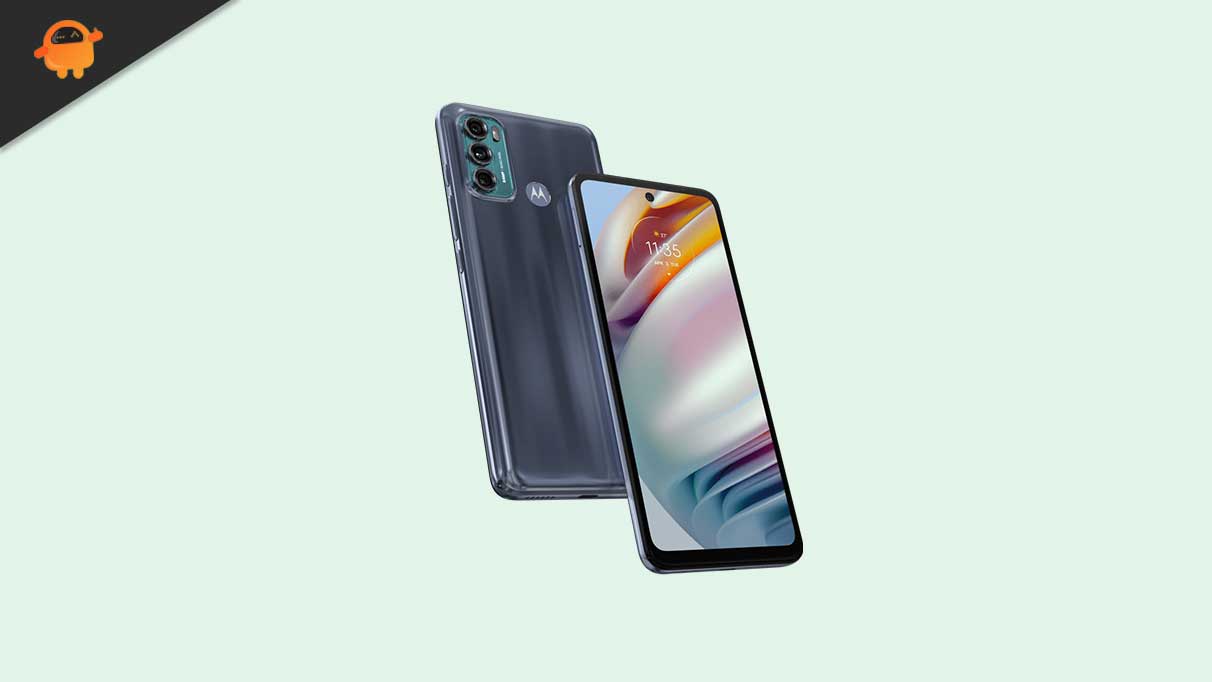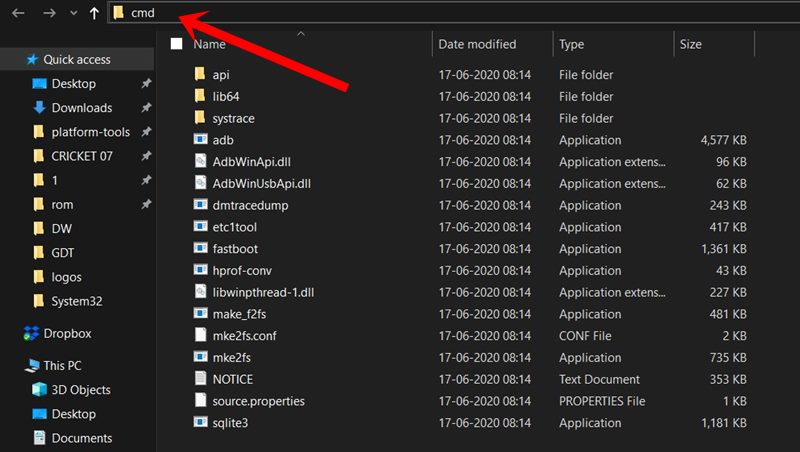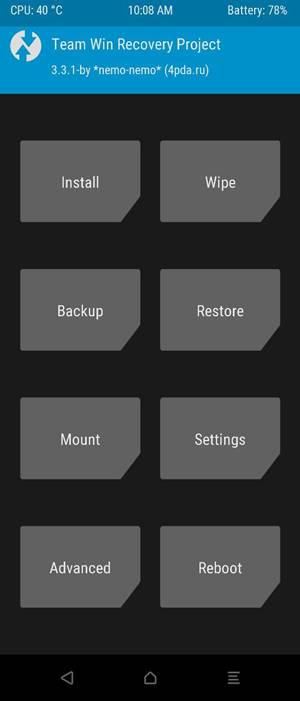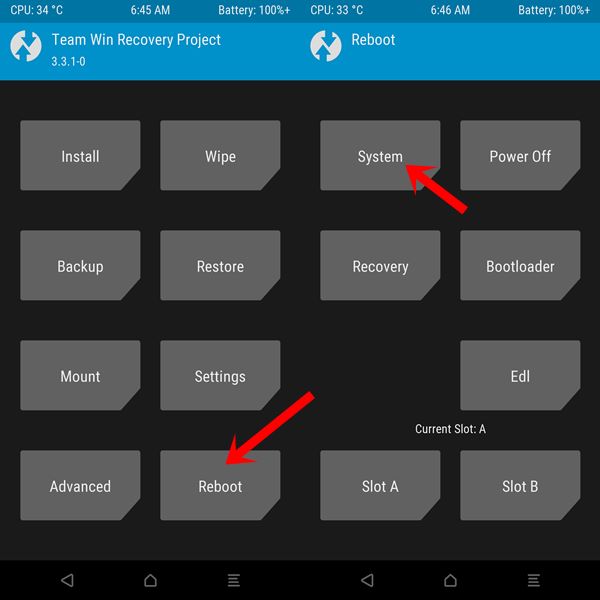On this page, we will guide you to install the unofficial Android 13 Custom ROM on Moto G40 Fusion (codenamed hanoip). If you are someone who wants to install the vanilla version of Android 13, then this guide is for you.
Moto G40 Fusion is the most affordable Motorola phone launched in the country alongside the Moto G60 a couple of weeks back. The device features a 120Hz display and a 6,000mAh battery and is powered by an octa-core Qualcomm Snapdragon 732G SoC coupled with up to 6GB of RAM. Moto G40 Fusion sports a triple rear camera setup that comprises a 64-megapixel primary sensor with an f/1.7 lens and an 8-megapixel secondary sensor with an ultra-wide-angle f/2.2 lens, and a 2-megapixel depth sensor.
Also Read

Page Contents
Moto G40 Fusion Device Overview
The Moto G40 Fusion features a 6.8-inch IPS LCD panel with a resolution of 1080 x 2460 pixels. The screen refreshes at 120Hz, and it is an HDR10 display. Yes, we don’t get the deep blacks of AMOLED, but the high refresh rate of 120Hz is a good addition from Motorola. Under the hood, we have the Qualcomm Snapdragon 732G based on an 8nm manufacturing process. It is an octa-core processor with two Kryo 470 Gold cores clocked at 2.3 GHz and six Kryo 470 Silver cores clocked at 1.8 GHz. For handling the graphics-intensive tasks, we have the Adreno 618.
Coming to the cameras, we have a triple camera setup at the rear and a single camera at the front. The triple setup consists of a 64MP primary sensor paired with an f/1.7 lens, an 8MP ultrawide sensor paired with an f/2.2 lens, and a 2MP depth sensor paired with an f/2.4 lens. Coming to the front, we get a 16MP primary sensor paired with an f/2.2 lens. Both the front and rear camera setups are capable of 4K recording, but the rear camera can do it in 120fps while the front is only limited to 30fps.
The smartphone runs on Android 11 out of the box. It comes in two storage variants: 64GB internal storage + 4GB RAM and 128GB internal storage + 6GB RAM. In terms of communications, we have Wi-Fi 802.11 a/b/g/n/ac, Bluetooth 5.0, GPS, NFC, Radio, and USB Type-C 2.0. For sensors, we have a rear-mounted fingerprint sensor, accelerometer, gyro, and proximity. The battery inside the smartphone is a 6,000 mAh cell which should easily get you through a full day of extensive usage. The smartphone can be charged quickly, too, using the 20W charging adapter included in the box. The smartphone is available in two color options: Dynamic Gray, Frosted Champagne.
Android 13 and Its Features
Google has finally started rolling their stable Android 13 update to the public. As expected, only Google has released the update to their Pixel lineup, but no OEM has started cooking a stable yet.
Regarding the Android 13, it seems that the Android 12’s successor has plenty of additional features and improvements to its predecessor. We’ve already seen and used the major UI and design element changes in Android 12 last year, known as ‘Material You.’ This materialistic theming design enhanced the Android user experience from the minimal subtle look, rounded corners, improved pop-ups, etc.
Whereas the improved scrolling screenshots, optimized one-handed UI mode, better privacy & security features, improved app notifications, per-app basis language preferences, app permissions to send notifications, BT LE Audio support, auto theme icons, updated now playing widget, etc. Users will also find intuitive QR scanner support, enhanced silent mode, tap-to-transfer media controls, multiple profiles for NFC payments, and more.
What’s Working and Known Bugs:
Whats working? Wi-Fi RIL Volte Mobile data GPS Camera Flashlight Camcorder Bluetooth Fingerprint FM radio Sound vibration Known issues ? You tell me
How to Install AOSP Android 13 on Moto G40 Fusion
As the title suggests, here we’ve shared the requirements and steps to flash the AOSP Android 13 build on the Moto G40 Fusion (hanoip) variant.
Before heading over to the guide, make sure to follow all the requirements below.
Pre-Requisites
Before we begin with this procedure, I would strongly recommend you create a backup of your device storage and all your files stored on your device. Moreover, it is advised to follow the steps mentioned in this post carefully to avoid permanent damage or brick your device.
Charge Your Phone
It’s highly recommended to charge your handset before unlocking the bootloader to avoid your device from shutting down occasionally while going through the process. Make sure to keep at least 50% of charge or higher for a smooth operation.
Download ADB and Fastboot Binaries
You can skip this adb and fastboot part if you have already installed TWRP Recovery on your Moto G40 Fusion.
Using the ADB and Fastboot command (platform-tools), you’ll be able to boot your Android device into the bootloader mode (download mode), which will be easy for you to proceed with further steps. ADB (Android Debug Bridge) creates a connection or bridge between the device and computer to sideload files.
Fastboot is a more advanced command utility tool for Android devices that works with computers. You can download ADB and Fastboot Binaries (Platform-Tools).
Download Motorola USB Drivers
A USB Driver is a set of files that allows you to create a successful and strong connection between a mobile device with a computer properly using a USB data cable. It’ll be useful to transfer files between the connected devices, flash files on the handset, and more.
It’s also worth mentioning that mobile devices and other external devices can use and run USB Drivers on a Windows computer. Such as a mouse, keyboard, printer, external hard drives, speakers, USB flash drives, etc. You can grab Motorola USB Drivers here.
Unlock Bootloader Your Phone:
You must first unlock the bootloader on your Moto G40 Fusion to enjoy any custom ROM.
Install TWRP Recovery:
You must install TWRP Recovery on your phone to install any custom ROM on your device. After unlocking the bootloader, follow our guide to install TWRP Recovery on your Moto G40 Fusion.
Download Android 13 ROM:
Here, you will find all the Android 13 custom ROM for your Moto G40 Fusion (hanoip).
| Android Open Source Project | XDA Development Page |
Download Android 13 Gapps:
It’s worth mentioning that most of the third-party AOSP (Android Open Source Project) ROMs (also known as aftermarket firmware) come without any preinstalled Google apps package. You can manually install the Android 13 GApps by following our guide.
Warning!
GetDroidTips won’t be responsible for any issue that may happen to your device if you flash it on another device and brick it. Do it at your own risk.
Instructions to Install:
- Connect your device to the PC via USB cable. Make sure USB Debugging is enabled.
- Then head over to the platform-tools folder, type in CMD in the address bar, and hit Enter. This will launch the Command Prompt.

- Execute the below command in the CMD window or enter recovery mode by using the Volume and Power button combination. your device to TWRP Recovery:
adb reboot recovery
- Now head over to the Install section and navigate to the downloaded vendor and firmware. Perform a right swipe to flash it.
 TWRP Home
TWRP Home - If you want Google Apps as well, then you need to flash it at this instance itself. Go to Install, select the GApps ZIP file, and perform a right swipe to flash this file.
- When that is done, you may reboot your device. Head over to Reboot and select System.

Your device will now boot to the newly installed OS. With this, we conclude the guide on installing the AOSP Android 13 on Moto G40 Fusion. Remember that the first boot might take up some time, and you might have to set up your device from scratch.
Conclusion
Flashing the ported Android 13 on your Moto G40 Fusion will give you an early taste of the latest Android OS version. It looks like the Moto G40 Fusion model won’t officially receive the Android 13 update from the manufacturer. So, it’s a good idea to get most of the features and visual treatment. However, if you find any extra bugs or stability issues, you should report them to the respective forum.
That’s it, guys. We assume this guide was helpful to you. For further queries, you can comment below.
